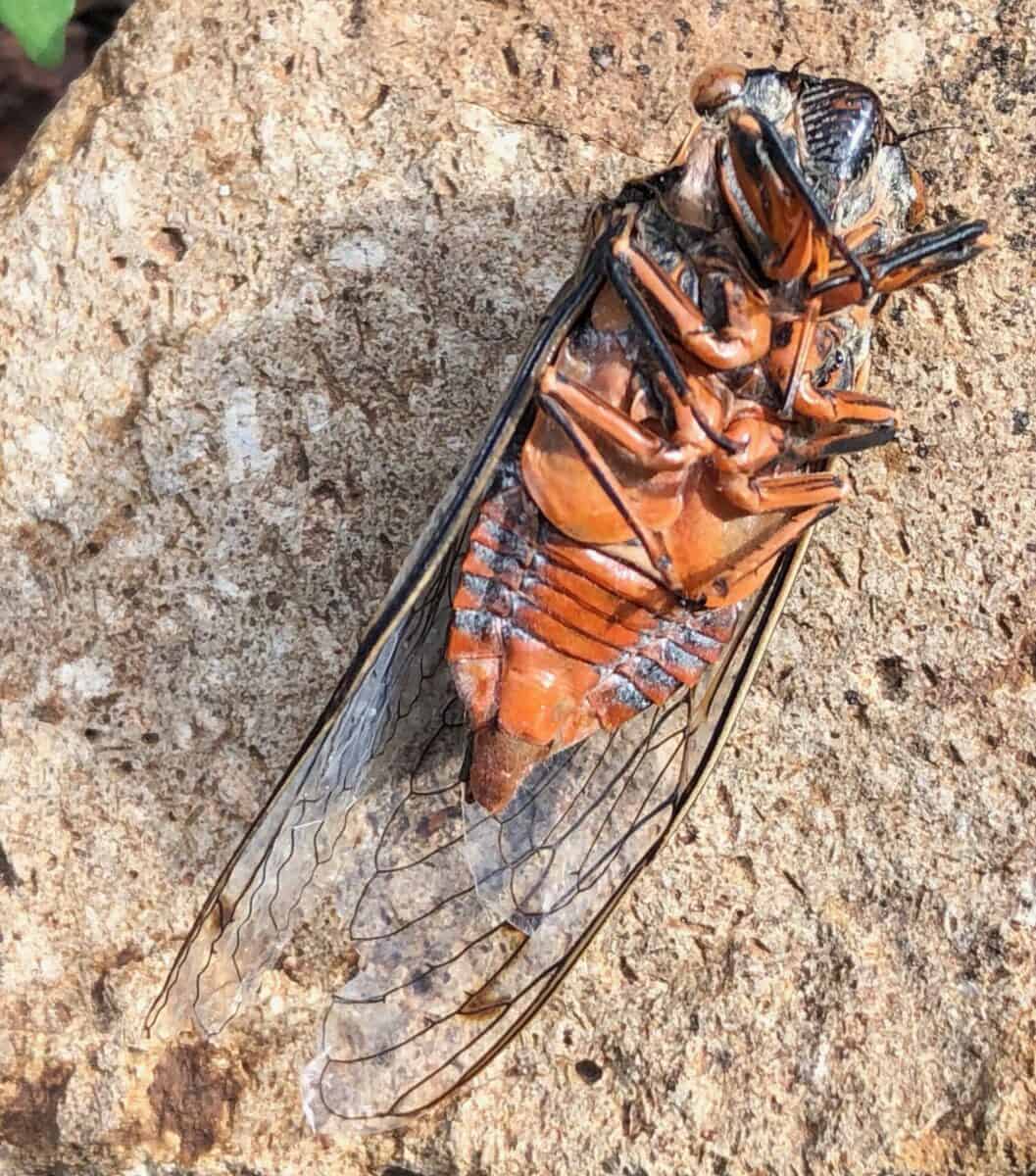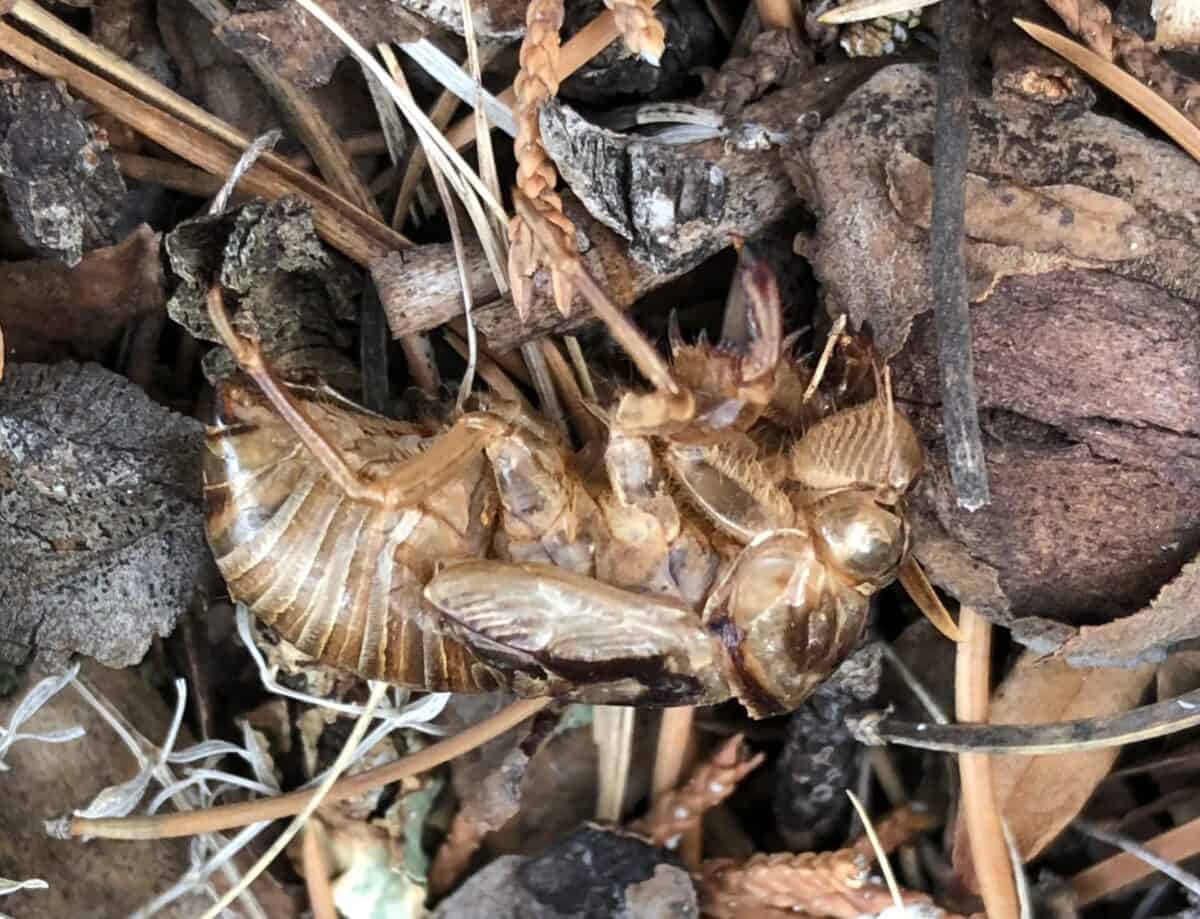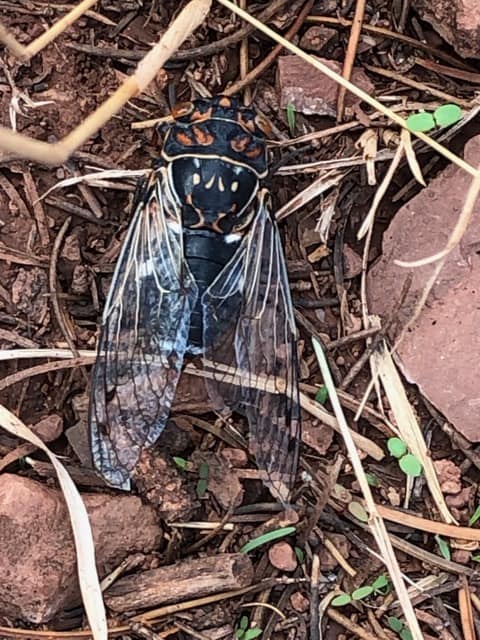Growing up in cool and grey Belgium, cicadas were a vacation background soundtrack when escaping in southern Europe. It was such a sweet sound until I moved here and felt assaulted by their relentless cacophony… Lately I spotted this one and was impressed by its beauty, which I tried to capture in these photographs.
I asked my favorite local naturalist Bob Barnes (editor of www.blackrange.org) to share some information about these loud neighbors. He explained:
“Cicadas are so loud and they only hatch every human generation or so. That is what most people know about cicadas. That is only partially true: yes they are loud, but there are 170 or so species of Cicada found north of the Mexican border with the United States. With that many species you’ve got to know there are differences in their life styles.
“They are divided into two basic groups. The periodic cicadas are those which emerge every 13 or 17 years (that is a story in itself), and the annual cicadas which (like the one shown here, Hadoa duryi) have life cycles of two or three years. The name cicadas (pronounced suh-KAY-duh [sə-ˈkā-də], suh-KAH-duh [sə-ˈkä-də], or sī-ˈkā-də) is either from the Western Apache word for ‘sing’ or from the Latin cicada (‘buzzer’). Although the first is more romantic and more likely to appear in a book about the old west, my money is on the Latin derivation.
“Yes, all make a racket. Well, the males make a racket as they try to attract mates. If you wish, you can follow this link to listen to what one sounds like: Hadoa duryi song – but crank up the audio to get a real sense of what it sounds like. That sound is a ‘whole insect’ work of art. If you were to look inside the first abdominal segment of a cicada you would find the tymbal muscle (found in few other animals).

“The tymbal muscle can contract from 120 to 480 times a second, depending on the species. Yes, a second. Each time the muscle contracts it bends the adjacent hard body part, and when it pops back a clicking sound is generated. Air sacs in the body of the cicada are ‘tuned’ to the frequency of the clicking sound and amplify the sound. Humans can’t really distinguish individual sounds which last 1/480th of a second, so all of those clicking sounds seem like a continuous buzz to us.
“There are thousands and thousands of species in the world which do not have common names. Generally they are obscure and of little consequence to humans. Although Hadoa duryi is not exactly obscure and is a pretty big bug, it has no common name. It is simply known by its Latin binomial, its scientific name. As for what they eat, it is assumed (but not known definitely) that they eat pines, but they are also found in and around yuccas, cactus, and many other ‘desert’ plants. That lack of clarity about an insect which emerges in tens of thousands at once means that its eating habits are of little (known) consequence to humans. If it were economically consequential we would know what it eats.
“Although this is an annual cicada, the numbers which emerge will peak every few years.

“Molts are the insect ‘skin’ that cicadas shed or leave behind when they become adults
“The cycle is not well understood and as with many insects, the taxonomy is in dispute. Until 2015, for instance, this species was in the genus Tibicinini and was known as Tibicinini duryi, but had no common name.
Like humans, cicadas are diverse. Learning a bit about them makes them more interesting, much more interesting than ‘a whole lot of noisy bugs.'”


Wow! The beauty of cicadas! And what we humans would perceive as tenderness as the leg/arm of the male cicada caresses his female partner during mating! Thank you Veronique for bringing the wonder of this amazing insect to us, and thank you Bob Barnes for supplying a scientific commentary to accompany these lovely pictures.